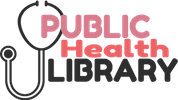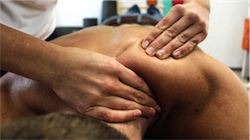Guest Blog: Caring for a Person with Chronic Pain
Jennifer McGregor
PublicHealthLibrary.org
December 21, 2016
Managing chronic pain is often challenging, with issues like building tolerance to prescription pain medication, requiring increasing doses, and finding alternate ways to cope with breakthrough pain. Taking prescription pain medication comes with a risk of developing an addiction; left untreated, though, chronic pain can make it difficult, if not impossible, to carry out day-to-day tasks.
As a caregiver, knowing how to manage your charge’s pain is not easy. It may even make you feel helpless if they can’t take prescription medication. Fortunately, there are a few alternative solutions for managing chronic pain.
Exercise is Most Beneficial
Exercise has been shown to be the most effective way to manage chronic pain. Getting the body moving helps prevent muscle and joint stiffness and manages the inflammation that’s so commonly associated with chronic pain. Of course, exercising while in pain is never an easy task, so convincing your charge to do it may be an uphill battle.
Rather than urging them into difficult exercise such as running, consider more mellow activities like tai chi or restorative yoga. If these aren’t appealing, try making a game out of it. For example, TV workouts are becoming very popular, as they allow you to get a workout in while watching your favorite show or movie.
For people with certain injuries and underlying health conditions who can’t engage in even light exercise, massage is a useful alternative. It offers the benefit of relaxation with the same release of endorphins that exercise provides. Image via Pixabay by ElvisClooth
Meditation Has Also Been Proven Effective
Studies have shown that people with chronic pain who practice meditation experience a decrease in their pain. Tension and stress can become quite painful, and meditation may be just the thing needed to relax. Practicing meditation is a tool that teaches one to simply be present, allowing both mind and body to relax and reducing stress-induced pain.
Meditation may not be an immediate solution, as learning to meditate properly takes time. But once mastered, it may be the most effective option.
Make Necessary Home Modifications
Some forms of chronic pain may not be possible to exercise or meditate away. In these cases, home modifications can be a good way to limit everyday pain. For example, if standing or reaching is painful to your charge, modifying the kitchen to be useful when seated will help them.. Other helpful home modifications include support bars, shower chairs, or even a new mattress.
--
Of course, it certainly never hurts to try new forms of pain management. Anti-inflammatory diets might work wonders for people who have tried meditation with no results.
Helping a person cope with chronic pain is tough. Every chronic pain sufferer is different, with varying sources and degrees of pain as well as differing limitations. Don’t give up on working toward effective pain management if one tactic doesn’t work. There is something out there that will make both of your lives easier.
About Jennifer

Jennifer McGregor is a pre-med student and health improvement nerd. She and a friend developed PublicHealthLibrary.org for a college class. Jennifer’s goal is to turn it into a go-to resource for reliable health information on the Web. When she isn’t working on the site, Jennifer is usually studying or relaxing with her adorable rescue mutt, Sam.
< Last: Blog: Theater Accessibility
Next: Guest Blog: How to Cope with a Chronic Pain Diagnosis >
Blog Roll
CTD is a member of the Disability Blog Network.



